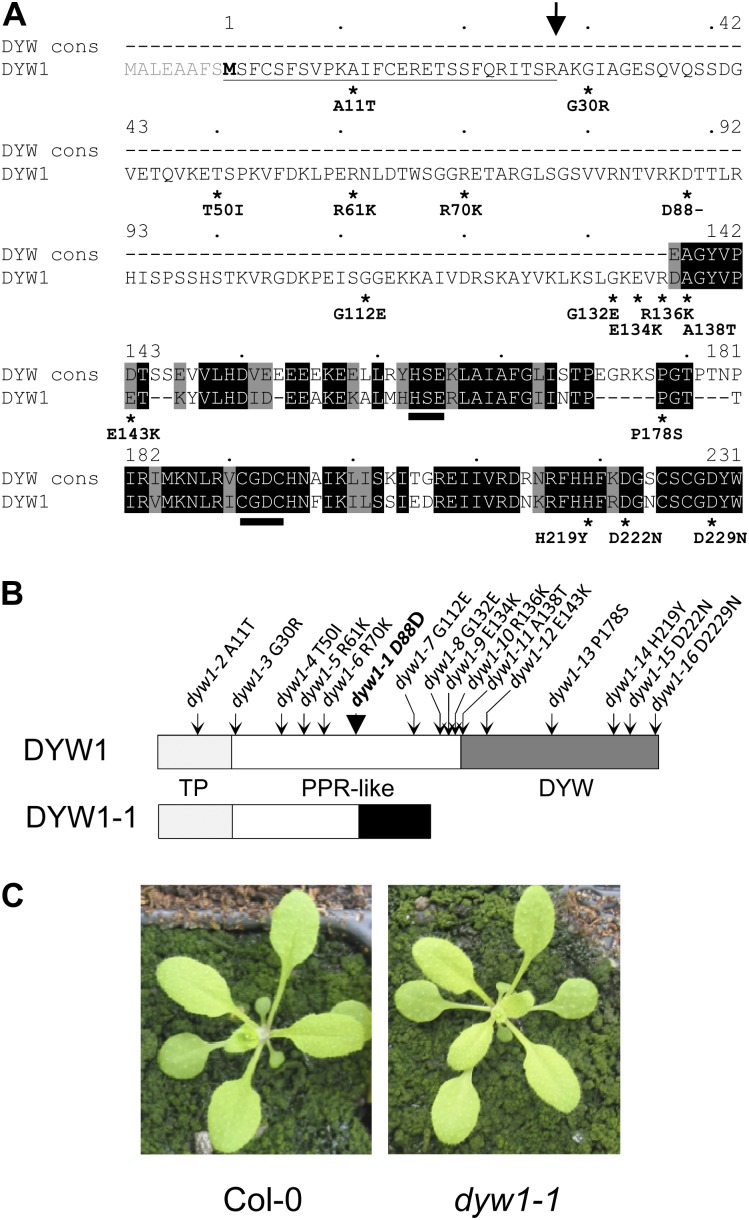Figure 1.
Structure of the Wild-Type DYW1 Protein and the Mutant Proteins Encoded by the Different Alleles.
(A) Alignment of the DYW1 sequence with the DYW domain consensus (Lurin et al., 2004). The DYW1 sequence was aligned against the DYW domain consensus (DYW cons) using the pairwise alignment software at http://pir.georgetown.edu/pirwww/search/pairwise.shtml. The sequence numbering is shown above the sequence according to M2. Identical residues are shaded black, and similar residues are shaded gray. The putative DYW1 targeting peptide is underlined, and the position of a potential cleavage site indicated by an arrow. The HxExnCxxC deaminase signature identified in DYW domains (Salone et al., 2007) is indicated by two black bars. Positions of the 16 substitutions identified in DYW1 coding sequence are indicated by stars under the DYW1 protein sequence. The sequence modification resulting from each mutation is indicated at the protein sequence level (amino acid identity in wild-type sequence/position of the amino acid in the protein sequence/ amino acid identity in the mutant protein).
(B) Structure of the 231–amino acid protein encoded by the DYW1 gene and positions of the EMS mutations. The 27–amino acid targeting peptide (TP) is indicated in light gray and the 95–amino acid DYW domain in dark gray. The PPR-like region in the middle is indicated in white. The PPR-like region of DYW1 is not recognized by any PPR detection software but presents a low similarity to PPR proteins when searching by BLAST. Positions of the mutations are indicated by arrows on the DYW1 protein. The sequence modification resulting from each mutation is indicated at the protein sequence level (amino acid identity in wild-type sequence/position of the amino acid in the protein sequence/amino acid identity in the mutant protein). The structure of the putative DYW1-1 is indicated below the wild-type DYW1 protein. The additional protein sequence unrelated to wild-type DYW1 protein is indicated in black.
(C) Phenotype of a dyw1-1 mutant and Col-0 wild-type plant after 18 d in soil.
[See online article for color version of this figure.]

